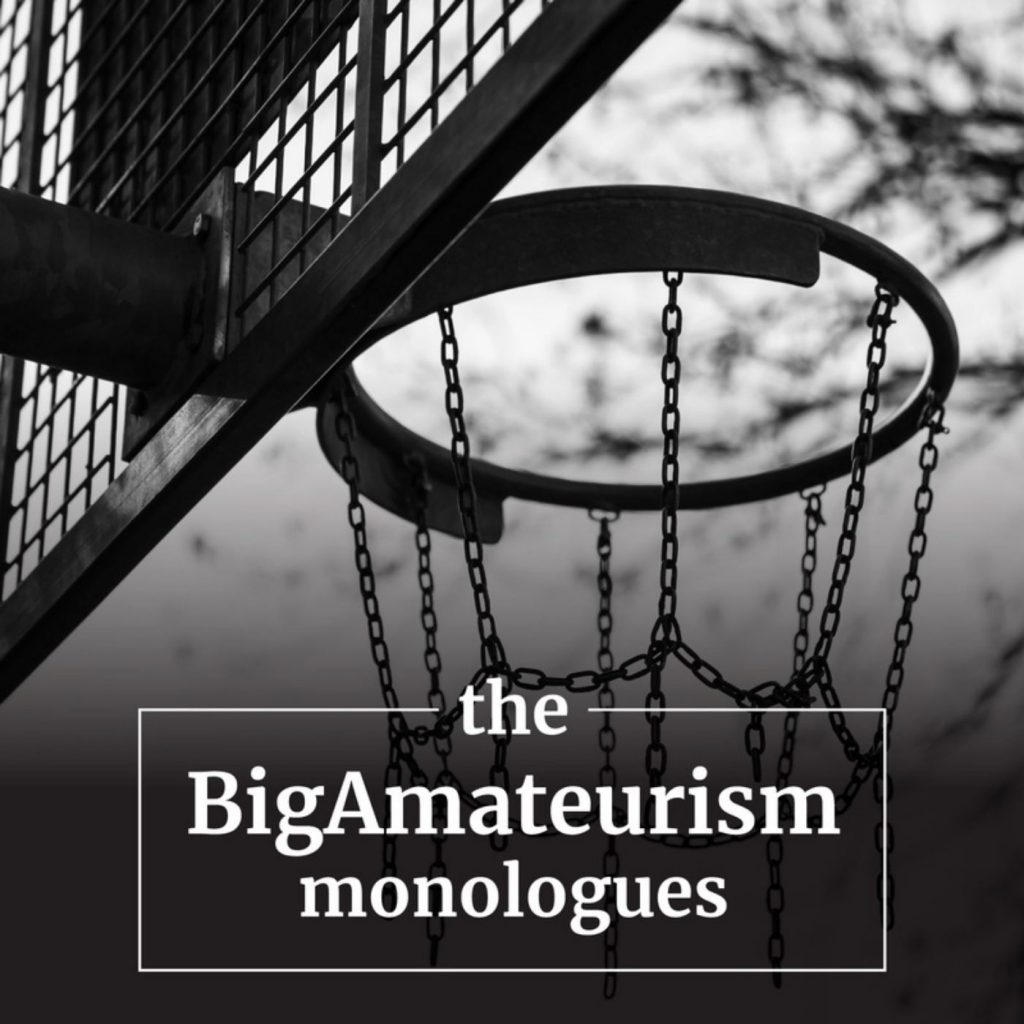Episodes
The period 1945 – 1956 is one of the most consequential eras in the history of college sports. The modern NCAA was born with the hiring of Walter Byers as CEO and the acquisition of legitimate, national enforcement authority. This era saw the NCAA successfully monopolize the market for televised football along with the adoption of the full athletics scholarship as a nationally uniform limit on compensation for revenue-producing athletes’ labor. These transformative milestones were the product of a perfect storm of inter-connected post-WWII events, including the GI Bill’s education benefits, enhanced communications technologies, mainstreaming commercial air travel, and the expansion of television. These societal changes fueled a Wild West recruiting environment in college football and men’s basketball leading to a national debate over the fundamental relationship between revenue-producing athletes and major universities. This debate was framed around the NCAA-driven “Sanity Code” legislation to achieve national agreement on the terms of the athletics scholarship. The Sanity Code was passed in 1948 and served as a compromise between southern schools that insisted on pure athletics scholarships and northern/midwestern schools that insisted on ostensibly merit and need-based scholarships. The regional battle lines had an undeniable racial component. They were driven by one of the most powerful dynamics in college sports: the quest to gain or avoid losing a competitive advantage in the talent acquisition market. Open defiance of the Sanity Code by southern conferences and schools led to its practical death in 1950. The ensuing five years saw a national movement towards adopting the full athletics scholarship independent of NCAA oversight. Between 1950-1952, the NCAA and Walter Byers won two crucial regulatory stand-offs that gave the NCAA legitimate national regulatory authority. The first involved the University of Pennsylvania’s and the University Notre Dame’s independent television packages in defiance of the NCAA’s claim to exclusive rights to televised college football. Under threat of member school boycott, Penn and Notre Dame capitulated to the NCAA’s power play. The second involved a Kentucky basketball point-shaving scandal through which the NCAA forced Kentucky to agree to a one-year ban on competition. The post-Sanity Code recruiting environment and the increasing adoption of the full athletics scholarship resulted in a potent threat to the evolving big-time football marketplace: workers’ compensation liability. Injured athletes contended that their scholarships amounted to contracts for hire through which they were, in reality, employees of their universities. Establishing an employer-employee relationship is a prerequisite to workers’ compensation benefits. Byers and NCAA lawyers invented the concept of the “student-athlete” to mask the true nature of the relationship between revenue-producing athletes and universities. Finally, in 1956, the NCAA and big-time universities agreed to adopt the full athletics scholarship as the single, uniform benefits exchange. This decision abandoned any rational conceptualization of amateurism and adopted open pay-for-play professionalism. In his 1995 expose on college sports— Unsportsmanlike Conduct: Exploiting College Athletes—Byers said that the adoption of the full athletics scholarship in 1956 was one of the most important single events in the history of college sports.
The amateur-professional dance of hypocrisy in big-time college sports is defined principally in the relationship between high-value revenue-producing athletes in football and men’s basketball and the universities who buy their services. From the earliest iterations of BigAmateurism, universities have professed their amateurism virtue to the outside world while privately pursuing professionalism for power, prestige, publicity, and money. This episode—the first in a series—explores the many methods universities have used to quench their thirst for institutional superiority. All roads in this quest lead to one central motivation: gain or avoid losing a competitive advantage in the talent acquisition market. This series looks at several crucial eras that have shaped the evolution of this market, which is among the most misunderstood components of BigAmateurism. We start with the period 1906 – 1945, in which universities competed for talent in a largely unregulated amateurism-based market. In this period, the NCAA had no enforcement authority. The concept of “home rule” governed the market in which conferences and individual universities were left to their honor to adhere to principles of “amateurism.” These vaguely conceptualized restrictions were primarily honored in their breach. We use the 1929 Carnegie Report on American College Athletics to frame the tactics used during the rise of big-time football in the early 20th-century to acquire superior talent. In subsequent episodes, we will examine other vital milestones in the talent acquisition market. This will include an analysis of the “perfect storm” era of 1945 – 1956. In this period, the NCAA acquired meaningful enforcement jurisdiction and authority at the national level. We look at the failed “Sanity Code” which was a compromise attempt to preserve some elements of “amateurism”, the threat of worker’s compensation suits that led to the invention of the “student-athlete”, and the capitulation to full athletics scholarships which former NCAA president Walter Byers described as one of the most important events in the history of college sports. Byers and many other supporters of the Sanity Code believed that the NCAA had abandoned any rational conceptualization of amateurism and adopted explicit pay for play with the full athletics scholarship. The next stop on our journey is 2003 – 2006 with former NCAA president Myles Brand’s conceptualization of the “collegiate model,” in which Brand attempted to reconcile the growing tension between the demand for highly professionalized big-time football and men’s basketball and the NCAA’s insistence on amateurism. Brand’s Orwellian “collegiate model” requires the acceptance of the proposition that “amateur defines the participants, not the enterprise.” We then move to the antitrust era starting in 2006 with lawsuits by athletes challenging the NCAA’s amateurism-based compensation limits, focusing on the remedies the district court and 9th Circuit formulated in the O’Bannon suit. The limited remedy for the NCAA’s violation of antitrust law in its name, image, and likeness compensation restrictions was folded into the athletics scholarship and deemed an education-related benefit consistent with the NCAA’s conceptualization of the athletics scholarship as nothing more than the reimbursement for reasonable and necessary education-related expenses. The O’Bannon remedy as framed by the 9th Circuit highlights the folly of deeming the athletics scholarship as anything other than pay for play. Then we will look at the 2014 attempt by Northwestern University football players to form a union. In that effort, a regional labor relations board utilized well-settled, objective, fact-based criteria to conclude that Northwestern football players were indeed employees and therefore entitled under federal law to vote on whether to form a union. Finally, we look at the changes in the athletics scholarship and other forms of compensation to Power 5 athletes due to the Power 5’s acquisition of “Autonomy” status under the NCAA umbrella.
How will the US Supreme Court rule in Alston? Predicting how courts may rule is always treacherous terrain, particularly with the US Supreme Court. Will the US Supreme Court throw us a curveball? In this episode, I look at four possible outcomes: (1) direct or indirect antitrust immunity for the NCAA in cases challenging their amateurism-based compensation limits; (2) an affirmance of the 9th Circuit’s decision (and the district court’s injunction permitting modest education-related benefits) under a full rule of reason antitrust analysis; (3) sending the case back for further action; and (4) rejection of amateurism as a defense to antitrust liability, opening the door to a free market for the value of athletes’ services. I discuss the likely impact of each of these outcomes and how the NCAA and Power 5 might respond. I also frame the Alston case in the context of the significant milestones in the athletes’ rights movement since 2006, none of which has resulted in a meaningful change in the relationship between revenue-producing athletes and in-system stakeholder-beneficiaries. Finally, I discuss how the NCAA/Power 5 quest for antitrust immunity fits into their broader campaign to completely eliminate any external regulatory threats to the status quo business model.
Looking at the NCAA-Power 5 prisoner’s dilemma with the benefit of historical context and the evolution of the football product into a dominant sub-cartel under the NCAA umbrella, we look at the existing incentives for both the NCAA and Power 5 to either preserve the status quo through cooperation or to split and pursue their separate interests. This episode explores the reasons why the NCAA and Power 5 have strong incentives to cooperate. The “glue” that binds this cooperation is the NCAA’s overarching, national amateurism-based compensation limit. We analyze these issues through the lens of expert testimony in Alston and a risk-reward framework that incorporates rarely-discussed benefits to the Power 5 of remaining under the NCAA umbrella.




